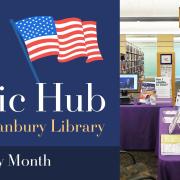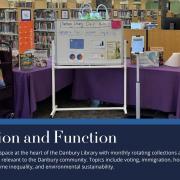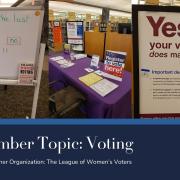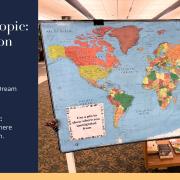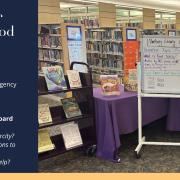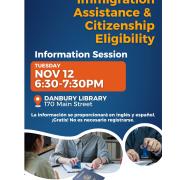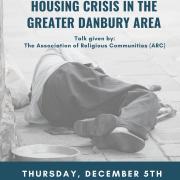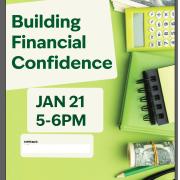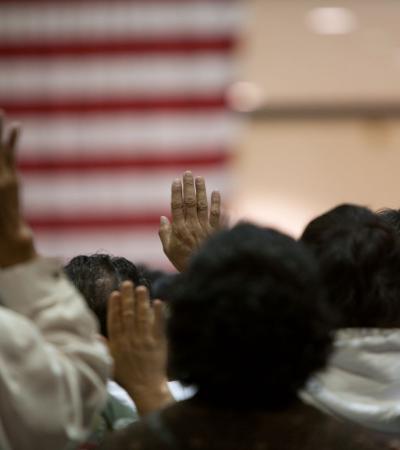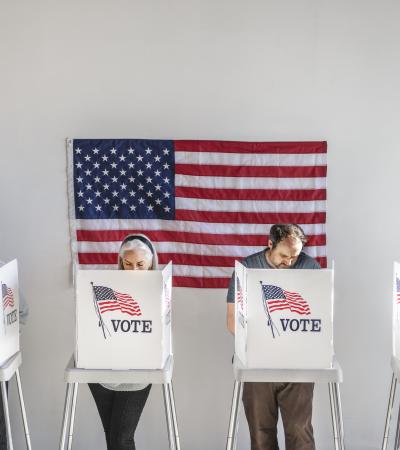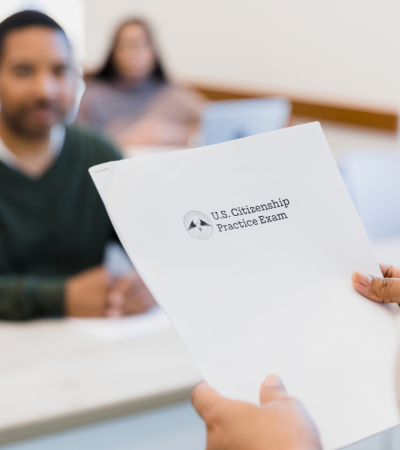The Civic Hub Initiative at Danbury Public Library was a six-month pop-up designed to deepen civic engagement by spotlighting critical local issues through rotating displays and programming. Each month focused on a theme selected for its relevance to Danbury, including Voting, Immigration, Housing Instability, Food Security, Income Inequality and Environmental Sustainability.
Curated book collections, interactive whiteboard prompts and passive activities were paired with direct engagement at staffed Civic Hub tables. Volunteers provided one-on-one information to patrons, while monthly public presentations by partner organizations expanded learning opportunities. The initiative aimed to foster dialogue, raise awareness and connect the community to reliable civic resources.
Advanced Planning
The Civic Hub was created to make civic engagement more visible, accessible, and meaningful to all members of the Danbury community. Our goal was not only to deepen civic understanding, but to demonstrate that anyone and everyone can be involved and make an impact at the local level. Libraries are among the few truly inclusive public spaces, and we believe that comes with the responsibility to ensure civic education reaches all patrons, especially those who have historically been underserved or underrepresented.
Our learning outcomes focused on three objectives: (1) Provide reliable, accessible information on pressing civic issues relevant to Danbury; (2) Promote participation through both passive and active engagement; and (3) Connect patrons with local resources and opportunities for advocacy, involvement, and support. We hoped to empower our unhoused patrons, immigrants, non-native English speakers, and those who may not otherwise feel represented in local conversations, by meeting them where they already are, and showing them that civic engagement is not only for some, but for everyone. Planning began in July 2024 and was extensive.
The project was originally modeled after Skokie Public Library’s Civic Lab and adapted to reflect the needs of our community. Early tasks included theme development, collection curation, outreach to community partners, and mapping out the physical layout of the Hub. Responsibilities were shared among departments and staff members. Our graphic designer created large-scale signage and visuals to promote each month’s theme, and the marketing team planned digital and physical outreach strategies. We collaborated closely with the IT department to create an interactive iPad station for evaluations and passive programming.
We also worked with outside partners, including the League of Women Voters to organize programming and train volunteers. Internal planning documents, calendars, and weekly task breakdowns helped keep all moving parts aligned. One challenge emerged in the form of language barriers. As we engaged more directly with the public, we realized that many of our target users, especially those most impacted by the civic themes, were non-native English speakers. We quickly adapted by translating signage into Spanish and Portuguese and by expanding our collection of books in multiple languages. This shift was not only logistically important but philosophically aligned with our mission: civic engagement cannot be meaningful unless it is inclusive.
Despite these challenges, the Civic Hub successfully met its goals. It became a vibrant and dynamic feature of the library, and its presence at the entrance served as a daily reminder that civic participation is not an abstract concept, it is something patrons can live and practice every day. What began as a six-month grant-funded initiative now continues as a permanent fixture in the library, sustained by community partnerships, engaged staff, and a deeper understanding of what it means to be civically connected.
Marketing
The Civic Hub was promoted through a multi-channel marketing strategy designed to reach a wide cross-section of the Danbury community. Our promotional efforts included regular posts and updates on the library’s Instagram account, where we shared photos, program highlights, and reminders about upcoming themes and events. Banners and signage were prominently displayed within the library to draw attention to the Civic Hub's location and monthly topics. Flyers were distributed both inside the library and in various partner organizations throughout the city to expand our reach.
The Danbury Library website featured a dedicated section highlighting the Civic Hub initiative, with information about each monthly focus, available resources, and scheduled programs. In addition to our own efforts, the Civic Hub initiative received media attention when a local news outlet covered our Voting theme, significantly boosting awareness. This coverage helped to attract a wider audience, including city officials, and even brought the mayor to visit and engage with the Civic Hub in person.
Programs and special events were also heavily promoted closer to their scheduled dates to ensure that they remained fresh in the minds of potential attendees. Word of mouth played an important role, particularly through our community partners who helped share information with their networks.
Each monthly topic drew different levels of participation, reflecting its resonance with different segments of the community. Themes with a broad and immediate personal impact, such as Voting and Budgeting, generated the most attention and engagement. Overall, the layered approach to promotion allowed us to successfully reach a diverse audience and maintain consistent engagement throughout the duration of the Civic Hub initiative.
Budgeting
The Civic Hub was funded through the Peggy Barber Tribute Grant in the amount of $2,500.
The breakdown of the budget is as follows:
- $1781 towards collections/ resource materials
- $319 towards materials for the passive activities
- $400 towards presenter fees
The majority of funding supported the development of curated collections tailored to each of the six monthly civic themes. Titles were carefully selected to offer engaging and informative literature across age groups, including adult, young adult, and children’s books. A delay and eventual cancellation of part of the original book shipment unexpectedly became an opportunity to reallocate funds toward Spanish and Portuguese language materials, expanding the Civic Hub’s inclusivity and impact.
We spent $319 on materials for passive activities and to build the physical Civic Hub space. This included the purchase of a whiteboard, corkboard, easels, ballot box, magnets, markers, Post-it notes, pins, and an iPad stand. These tools were essential for creating interactive opportunities for patrons to engage with each theme.
Presenter fees exceeded initial projections, but the cost was offset by savings in other areas. The library’s in-house graphic design team produced all signage and marketing materials, eliminating the need for external printing. Additionally, QR codes and digital links replaced printed flyers, keeping outreach efforts modern and cost-effective. Many partner organizations also provided their own printed materials, allowing the library to remain environmentally conscious while minimizing expenses.
For libraries seeking cost-cutting strategies, leveraging existing collections, utilizing in-house resources, and working with volunteer presenters can significantly reduce expenses. With thoughtful planning and adaptability, a high-impact, community-centered civic program can be achieved on a modest budget. Dedicated collections can also be developed using a library’s existing catalog.
Day-of-event Activity
The Civic Hub was a sustained, six-month initiative that featured six distinct civic themes and public presentations. Each month required its own planning, setup, and staff coordination, with programming and logistics tailored to the theme and partner organization.
Day-to-day management was handled by one primary staff member, who oversaw monthly transitions, curated materials, coordinated volunteers, and maintained the space. While the ongoing operation was feasible for one person, successful execution relied on collaboration across departments. Marketing, graphic design, cataloging, and facilities teams contributed essential support, ensuring the Civic Hub was well-promoted, visually cohesive, and fully resourced.
To create an accessible and engaging space, a prominent area within the library was dedicated to the Hub. Essential elements included a large whiteboard for interactive prompts and community feedback, an iPad station for survey-based evaluation, and book displays curated specifically for each civic theme. Custom infographics and signage provided context and encouraged deeper engagement, while partner organizations supplied informational materials and volunteers who staffed the tables throughout the month.
The two big components of the initiative were the Civic Hub space and the monthly speaker presentations. On the day of the speaking events, a staff member set up the space, including tables, chairs, signage, and technology, and remained available to support the speaker and attendees. Monthly turnover of the Civic Hub displays required careful reconfiguration to refresh collections, update signage, and introduce new interactive activities.
Logistical demands varied depending on the topic. The Voting theme, for example, required extensive volunteer recruitment and specialized training to ensure voter registration was conducted accurately and responsibly. Staff partnered with local organizations and student groups to facilitate this effort, which involved managing registration stations and supporting digital resources.
Although the day-to-day operations were manageable, the Civic Hub’s success depended heavily on cross-departmental collaboration and the collective enthusiasm of the library staff. This teamwork allowed the Hub to maintain a polished, dynamic presence and deliver consistent, high-quality civic engagement opportunities to the Danbury community.
Program Execution
Daily engagement with the Hub was strong, with patrons consistently browsing materials, interacting with whiteboard activities, and speaking with volunteers. Speaker events drew modest but meaningful attendance. The monthly topics, events, programs and partner organizations are linked in the Planning Document.
Evaluation was a central component of the Civic Hub initiative. Each month, surveys were made available through an iPad station at the display to collect patron feedback. The original surveys included longer, open-ended questions designed to measure knowledge gain and program effectiveness. However, we quickly encountered a challenge. Although visitors engaged enthusiastically with the Hub by writing on the whiteboard, browsing curated collections, and speaking with volunteers, few were willing to spend time completing lengthy surveys. In response, we revised the surveys to feature shorter multiple-choice questions with optional open-ended responses and adjusted the language to be more accessible. This shift led to a noticeable increase in feedback, particularly among patrons for whom English is a second language and those with limited literacy skills.
Feedback was overwhelmingly positive. Survey results showed that many patrons felt their knowledge of local issues increased and that they felt confident discussing the topics with others. Patrons also expressed appreciation for the accessibility of information and the welcoming atmosphere. Community feedback prompted real-time improvements, such as expanding multilingual resources and adapting programs based on patron needs.
Opening multiple channels for feedback, including the survey, whiteboard, and through direct conversations with staff, gave patrons clear opportunities to share their voices and influence future programming. Engagement levels varied by topic, with the most participation observed during the themes of Voting (September), Immigration (October), and Housing Instability (November). These trends reflected the relevance of the topics to our community and helped guide future programming priorities.
Survey Questions:
1. Do you feel the Civic Hub is a good tool for those wanting more information on local issues and civic involvement? Yes No
2. Please let us know why you responded yes or no (optional):
3. Did you interact with the whiteboard community question? Yes No
4. What resources were helpful in learning about this local issue? Books, Resource QR codes/link, Table Volunteers, Paper Materials (Fliers, Pamphlets, etc.), Whiteboard
5. Through interacting with the Civic Hub, how much knowledge did you gain on this local issue on a scale of 1-10 where 1 is having no change in knowledge and 10 is having the ability to speak confidently on the topic to a family, friend, or colleague. 1-10
6. Do you have a local issue you would like us to highlight at the Civic Hub in the future? (Optional)
Advice
For a long-term, evolving initiative like the Civic Hub, early and frequent communication with community partners is essential. Building strong relationships from the beginning helps secure volunteers, presenters, and local resources. Internally, it is important to delegate tasks to staff members who specialize in specific areas such as graphic design, marketing, technology, and programming. This ensures a professional and cohesive presentation without overburdening one person.
Organization and flexibility are equally important. Maintaining clear planning documents, timelines, and regular check-ins helps keep the project moving forward and allows for thoughtful adjustments when challenges arise.
For libraries with smaller budgets, a Civic Hub can easily be scaled down. Existing materials from the library’s current collection can be curated around civic themes, passive activities like whiteboard prompts can be created with minimal expense, and free community speakers can be invited to contribute.

